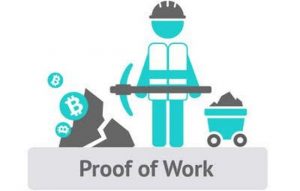
Introduction to This Article:
In the world of cryptocurrencies, two widely used consensus mechanisms are Proof of Work (PoW) and Proof of Stake (PoS). Both these mechanisms are used to ensure the validity and security of a blockchain network. In this article, we will take a closer look at Proof Work vs Proof Stake.
Proof Work vs Proof Stake: What is Proof of Work?

- Proof of Work is a way to make sure that the information on a blockchain is correct. Miners compete to solve a puzzle, and the first one to solve it gets a prize. This helps keep the blockchain secure and trustworthy.
- In Proof of Work, miners solve a puzzle called a hash function. This puzzle takes information and turns it into a code called a hash. Even a tiny change in the information will make a completely different code.
- The hash function used in PoW is SHA-256. On the other hand, Miners use their computing power to find a hash that meets a specific set of criteria. The criteria are designed to make it difficult to find a hash, and miners have to use trial and error to find the correct hash.
- When a miner finally finds the correct hash they tell everyone else on the network. Other people then check to make sure the answer is right. As a result, If it is right the miner gets a prize, and a new block is added to the blockchain.
Proof Work vs Proof Stake: What is Proof of Stake?

- Proof of Stake ensures the accuracy of blockchain data using validators instead of miners. Validators with more cryptocurrency have a higher chance of creating new blocks. This method is used in newer blockchain networks, For example, Cardano and Polkadot.
- Proof of Stake requires validators to hold cryptocurrency as a “stake” to create new blocks, verify transactions, and maintain the network. Validators risk losing their stake if they misbehave, such as by creating an invalid block.
- PoS is designed to be more energy-efficient than PoW. Miners use a lot of energy to find the correct hash in PoW, but in PoS, validators only need to hold cryptocurrency and verify transactions, which uses less energy.
Conclusion:
PoW and PoS have their own strengths and weaknesses, and each is suitable for different blockchain networks. While PoW is presently more widely used, PoS is gaining popularity due to its energy efficiency and ease of entry for validators. However, It is crucial for those interested in cryptocurrencies and blockchain to understand these mechanisms.
Learn More – Information Courtesy
